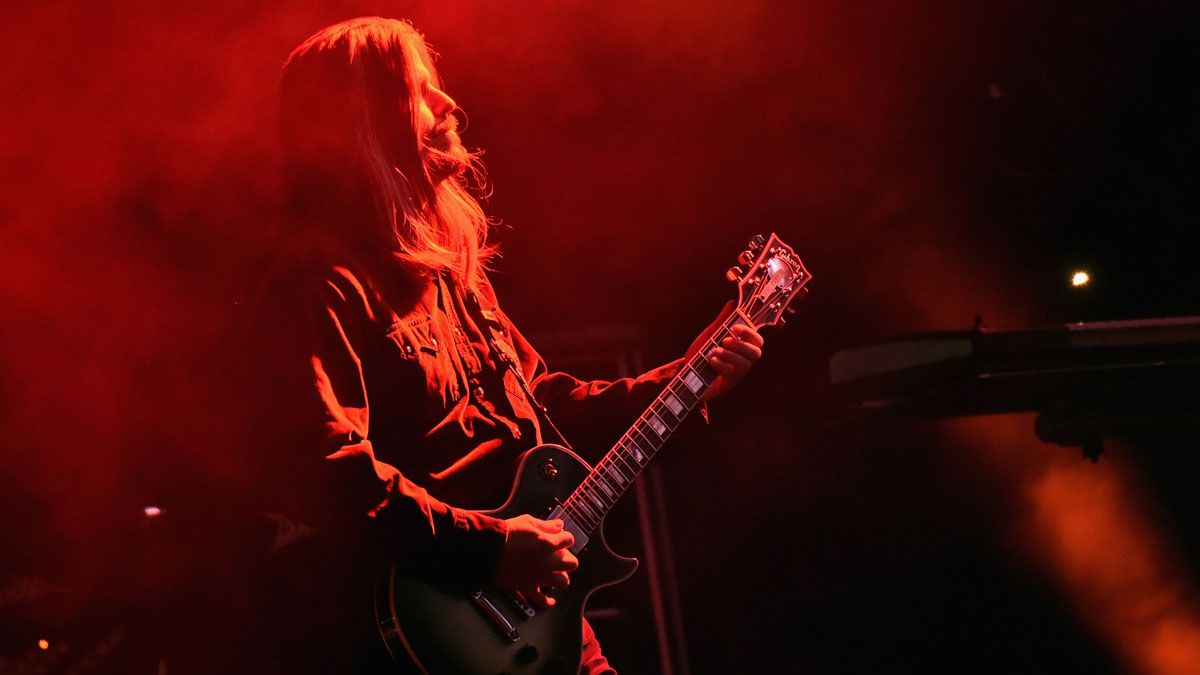

With an all-Mahogany construction, this guitar lets you attain those deep lows, while its Quilted Maple top brings out some top-end clarity to give riffs more focus and immediacy. The Epiphone Prophecy Les Paul isn’t available in Jones’ favoured Silverburst finish, but in terms of its build, it’s actually very similar to a stock Gibson Les Paul Custom. A brand new Gibson Les Paul Custom would cost more than double the total £1500 budget, whereas the Epiphone is a similar instrument that remains well within their price range – at around the £600 mark.

#ADAM JONES GUITAR RIG PLUS#
Punchy and clear with potent doses of gain, JB humbuckers are a trusted choice and undoubtedly a key ingredient of Jones’ sound.Įpiphone Prophecy Les Paul Custom Plus GXįor their Sound Like video, Matt and Rabea chose the Epiphone Prophecy Les Paul Custom Plus GX Outfit. However, their bridge pickups were swapped out for high-output Seymour Duncan JB humbuckers at some point. Jones uses his Silverburst Les Pauls for both live performances and studio work, and for the most part they have been left unmodified.

This can therefore be attributed to Jones’ distinctive sound, helping to form the powerful low-end and tight mid-range tones that he’s known for. Old-school ’70s and ’80s models, though, were not weight-relieved at all. This is unusual by today’s standards, as the majority of modern Les Pauls undergo weight-relieving processes to improve their ergonomics. Les Paul models, and indeed most Gibson guitars that were made during this time, are notoriously heavy as they’re constructed from very dense Mahogany. Although Jones owns several Silverbursts, his number one guitar has always been his ’79 Les Paul Custom made in Gibson’s ‘Norlin’ era. Adam Jones’ GuitarsĪdam Jones has been synonymous with Gibson Les Paul Custom guitars throughout his career with Tool – specifically Silverburst-finished models. With ambient sections in “Parabol/Parabola” and “Right In Two”, tracks like “Jambi” and “Rosetta Stoned” still deliver regular flashes of aggressive, distorted onslaught. The production on these albums is also a lot more polished and refined representative of the industry’s change to digital recording mediums in the early 2000s. Compared to their earlier work, these albums are viewed as being more diverse with the band delving deeper into their spiritual side. Lateralus (2001) and 10,000 Days (2006) saw the group take a slight step back from the hard-hitting style that they had formed.

#ADAM JONES GUITAR RIG FULL#
The tracks “Forty Six & 2” and “Pushit” put this transition on full display. Considered more progressive, Ænima has many alternative elements too, with Jones and bassist Justin Chancellor relying more on effects pedals to create variation. The band’s sophomore effort Ænima (1996) retained much of the raw edge heard in their debut, and is regarded by many fans as their finest work. While the former demonstrates their willingness to use dissonance and contrasting dynamics to build tension, the latter is a great example of guitarist Adam Jones’ ability to write catchy, pulsating riffs locking in perfectly with the powerful and energetic drum patterns of Danny Carey. Tool’s debut record Undertow (1993) features two of the band’s signature songs “Sober” and “Prison Sex”.


 0 kommentar(er)
0 kommentar(er)
